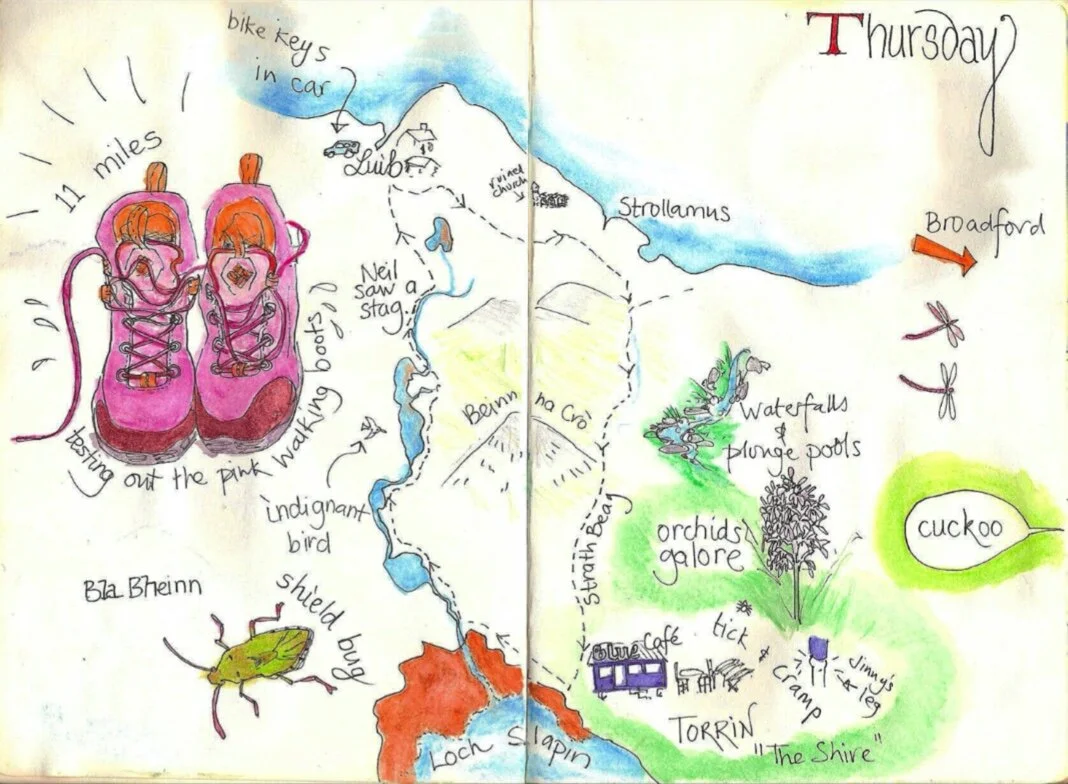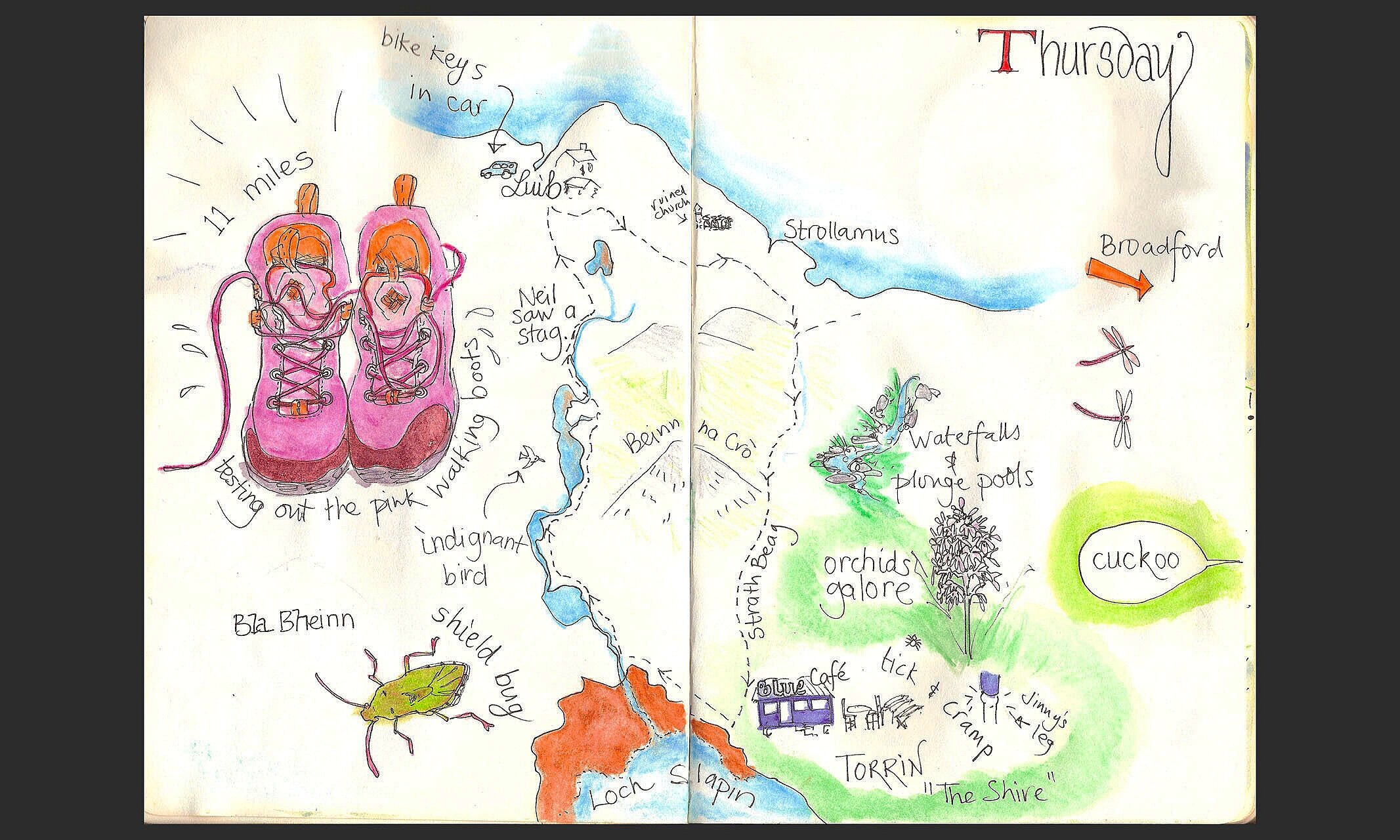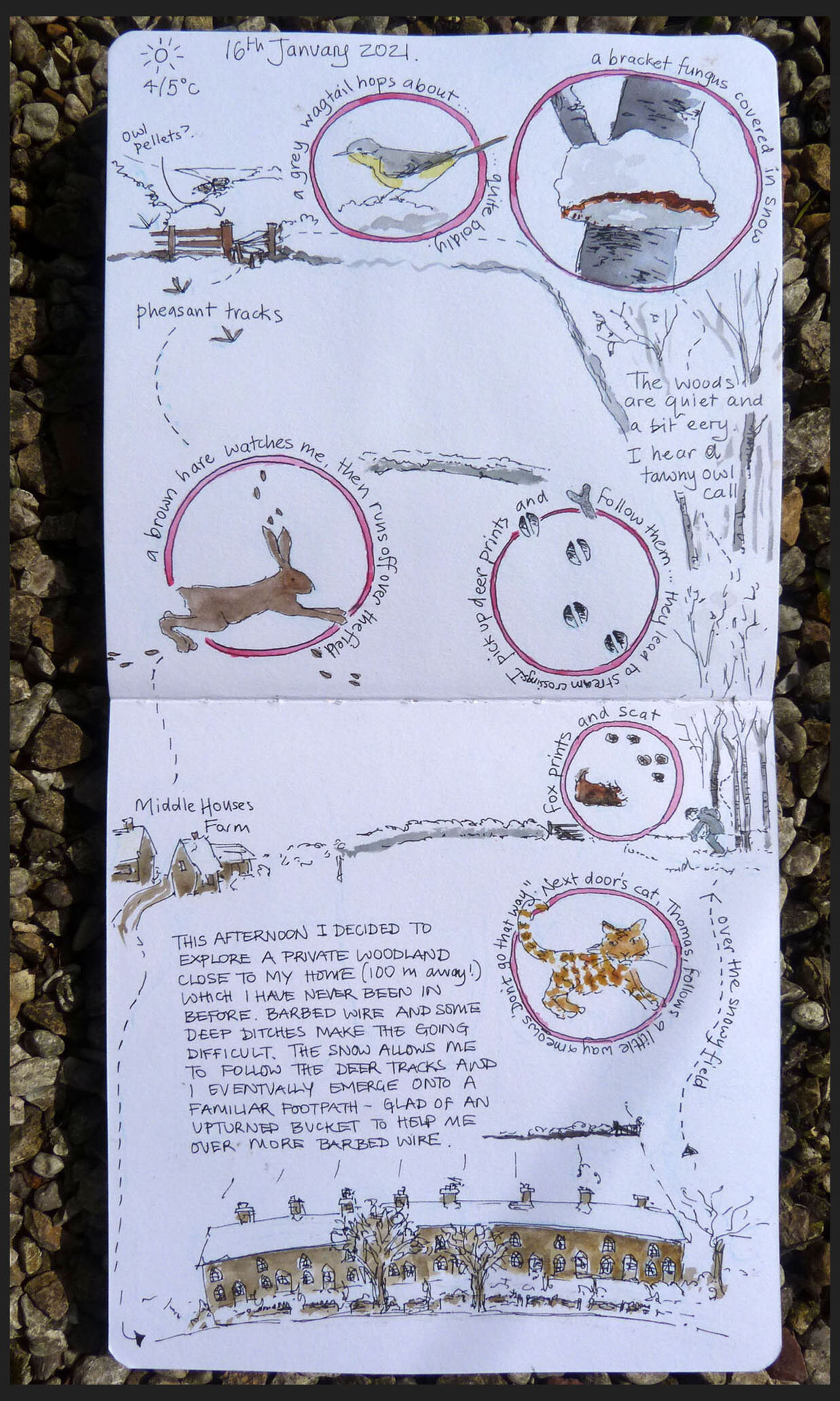I have written a diary for many years, and as someone who enjoys making art and other creative activities I embraced the idea in Julia Cameron’s book ‘The Artist’s Way’ of writing every day. However the diaries were building up. Where to store them? Whether to re-read them? Although not as cringeworthy as my teenage diaries, and considerably less amusing, I rarely do look back on them, other than to check when certain events took place. They are not of the confessional variety but I certainly would not wish them to be shared after my demise!
More recently however, I abandoned writing a conventional diary and started keeping a visual diary, mostly when away on holiday. And since discovering the online Nature Journal communities, these have gradually morphed into my nature journal. A nature journal tends to be outward looking rather than introspective and to my mind is good for the soul. These are pages that I look back on regularly; happy mementos of time spent outdoors, and I enjoy sharing them with friends and even strangers, such as yourselves!
I did my first drawn maps while on holiday; away with just my other half or in the company of friends. When you are out on a walk with others you can pause to take a quick photo, but patience runs thin if a member of the party stops to sketch each botanical find, so my journaling time needed to be after the day’s activities. I found this to be a really enjoyable and relaxing way of revisiting the day’s events. If we had been for a walk I would sum up the day with a simple illustrated map. A potentially antisocial activity became more communal once my friends knew what I was doing. Unless it was my turn to cook, the days would end in companionable discussions of the events and nature finds of the day, with perhaps a pre-prandial glass of wine to hand, sketching and revisiting the highlights of the walk. At the end of the holiday I could then share the memories of the trip through photos of my pages. I have quite a poor memory so these sketches are great reminders of good times shared.
During lockdown, nature journaling has become a more solitary activity and I value the time I have to spend on focussed and solitary sketching when out and about, or back home at the kitchen table.
On a few occasions I have been able to make a drawn walk ‘on the hoof’ when on my own, stopping to sketch and make notes en route. This requires a leisurely approach and clement weather with nothing to hurry home for. I always have my sketching kit at the ready and take it with me on my regular solitary walks, but more often than not the sketchbook stays in the bag. This has been especially so over the last winter. Cold, rain, snow and wind have all conspired against the notion of sitting drawing nature in that idyllic contemplative state that the research tells us is so good for us. And here in the British Isles, even the summer months do not bring so very many days that lend themselves to perfect ‘plein air’ conditions!
The drawn walk is one way of recording your outdoor experiences, whether drawing from memory, from photo references or from items that you have brought home; or maybe a combination of all three. It gives context to your finds and observations. Walks that you do regularly can show changes over the seasons. A mini landscape can suggest the location, with the option of rectangular or circular frames to indicate where highlights were observed. Some nature journalers use a concertina page for a long linear walk.
I don’t usually aim for scale or accuracy, more a rough sense of where I have been and more often than not there is not room on the page to squeeze in all the things I have seen, in which case just a written note or a symbol can serve as a reminder. When space permits I now also use Rosanne Hanson’s method of noting metadata related to weather conditions. and location. If you are keen to create a more accurate map, or your mind map lets you down, as in the case of our latest walk, a screenshot of an online map can be handy. You can even use gridlines to help with accuracy, although this approach can lead to a less spontaneous result.
My favoured method is to rough out the map and main items lightly in pencil, and then complete the details in ink. I use carbon ink in a Platinum refillable pen. Once dry I can then rub out the pencil and add loose watercolour.
I am very fortunate to live in a place with countryside on my doorstep. Walks either alone, with my other half and occasionally with friends have helped to keep us positive and have provided material for my journal during lockdown. My elderly mother has not been able to go out much and the journal has been a way to bring the outdoors to her. The sketched walks are my solace and will serve as reminders of these very strange times that we are all sharing.
I am a retired teacher, currently studying for my M.A. in Design at Sunderland University. I have used my nature journal practice as a foundation for my design projects.
You can find me on Instagram @flatcapsandfrappuccinos







